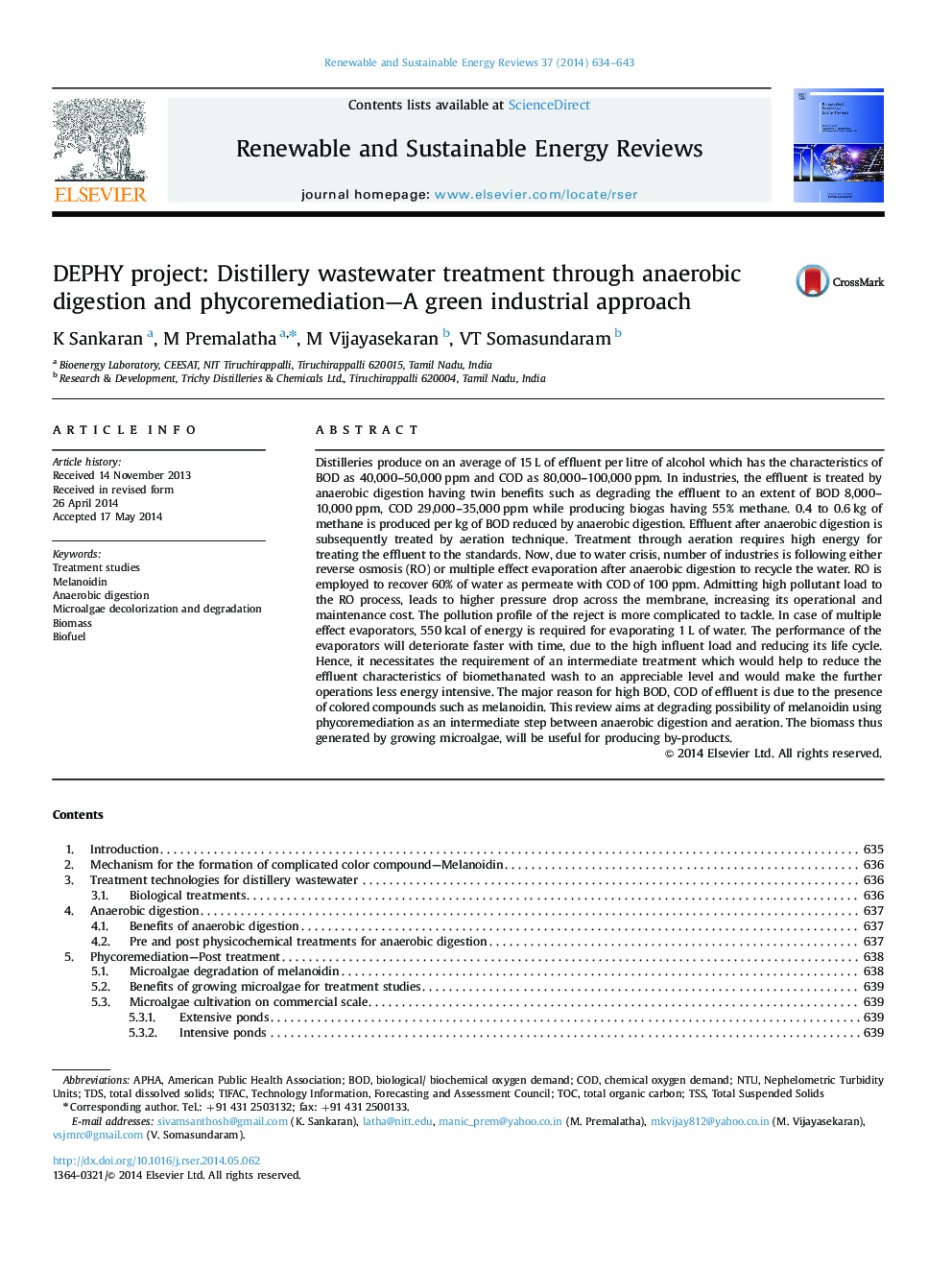| Article ID | Journal | Published Year | Pages | File Type |
|---|---|---|---|---|
| 8119685 | Renewable and Sustainable Energy Reviews | 2014 | 10 Pages |
Abstract
Distilleries produce on an average of 15Â L of effluent per litre of alcohol which has the characteristics of BOD as 40,000-50,000Â ppm and COD as 80,000-100,000Â ppm. In industries, the effluent is treated by anaerobic digestion having twin benefits such as degrading the effluent to an extent of BOD 8,000-10,000Â ppm, COD 29,000-35,000Â ppm while producing biogas having 55% methane. 0.4 to 0.6Â kg of methane is produced per kg of BOD reduced by anaerobic digestion. Effluent after anaerobic digestion is subsequently treated by aeration technique. Treatment through aeration requires high energy for treating the effluent to the standards. Now, due to water crisis, number of industries is following either reverse osmosis (RO) or multiple effect evaporation after anaerobic digestion to recycle the water. RO is employed to recover 60% of water as permeate with COD of 100Â ppm. Admitting high pollutant load to the RO process, leads to higher pressure drop across the membrane, increasing its operational and maintenance cost. The pollution profile of the reject is more complicated to tackle. In case of multiple effect evaporators, 550Â kcal of energy is required for evaporating 1Â L of water. The performance of the evaporators will deteriorate faster with time, due to the high influent load and reducing its life cycle. Hence, it necessitates the requirement of an intermediate treatment which would help to reduce the effluent characteristics of biomethanated wash to an appreciable level and would make the further operations less energy intensive. The major reason for high BOD, COD of effluent is due to the presence of colored compounds such as melanoidin. This review aims at degrading possibility of melanoidin using phycoremediation as an intermediate step between anaerobic digestion and aeration. The biomass thus generated by growing microalgae, will be useful for producing by-products.
Keywords
Related Topics
Physical Sciences and Engineering
Energy
Renewable Energy, Sustainability and the Environment
Authors
K Sankaran, M Premalatha, M Vijayasekaran, VT Somasundaram,
